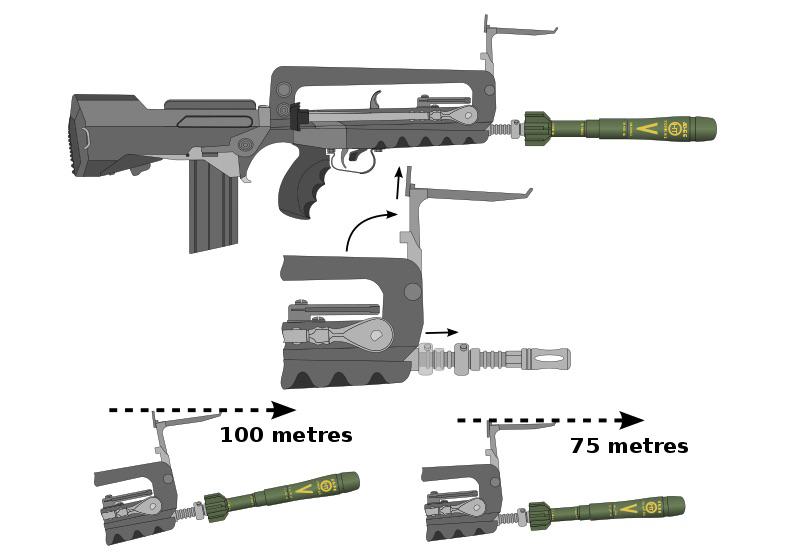Tervell [he/him]
- 17.6K Posts
- 2.27K Comments
HoI4 peace conference ass map
I like that there's both a Chinese Nationalist and Chinese Communist zone, truly

by the magazine, but it'd definitely be very awkward - you can't really wrap your hand around that, I guess you'd need to basically have your thumb sort of resting along the side, which probably isn't going to be very comfortable, especially with the weird angle your hand would have to be sitting in
Show
(on this C96 Mauser that grip is used to avoid having the hammer smack right into the webbing of your hand, which is occasionally a problem on some pistols, but particularly on the Mauser with the stock attached)
Show

 ·2 months ago
·2 months agoaccidentally subscribing to Ancient Egyptian beliefs about the heart
The heart was regarded in Ancient Egypt as the organic motor of the body and also the seat of intelligence, an important religious and spiritual symbol. It was considered as one of the eight parts of human body. Counter to other organs it had to be kept carefully intact in the mummy to ensure its eternal life. In Ancient Egypt, the concept of heart included three constituents: heart-haty, heart-ib, and the spiritual seat of intelligence, emotion and memory.
(why yes, I did watch a ton of the Tutenstein cartoon as a kid, how could you tell?
 )
)
I feel like unfortunately a lot of no-fappers are coming at this from a "I need to stop jacking off so I can get laid" angle, so it still comes back to sex, they love talking about how it made them more confident when talking to women.
It would certainly be nice if there were communities that actually did this though. We unironically need to have secular monastic orders, say what you will about organized religion as an institution but monks and nuns were a great idea.
they actually already came up with one, "are you still... master of your domain"
https://www.youtube.com/watch?v=JUtJBqgwNgo
where does "funny fake quote" go if not in /c/memes?
It's not long enough to be a /c/copypasta, it's not /c/fakenews, it's not either of the tanks, I guess it could go in /c/chapotraphouse?
extremely overpriced mid
well, it's an accurate reflection of American manufacturing

to be fair, this one is apparently a fake quote
but it's convincing because it's

you see, denazification is when you take take all the Nazis and fill your government's departments with them
Show
https://en.wikipedia.org/wiki/Braunbuch
Henry Morgenthau was a US politician who proposed a plan to essentially neutralize Germany after WW2 - split it up in several smaller states, and deindustrialize it to prevent any future rearmament. This plan was rejected though, along with Soviet attempts to turn Germany into a neutral (and demilitarized) buffer state between them and the Western Allies, so we eventually got the Federal Republic of Germany, complete with the Wehrmacht being essentially reactivated and significant propaganda effort being put into convincing people that they really weren't that bad and it was only the SS who did all the war crimes. All in the name of anti-communism.
https://en.wikipedia.org/wiki/Morgenthau_Plan
After some further research, it seems like it might actually be a digital painting, so it sort of is CG? I'm not very familiar with the terminology, http://www.vfxhq.com/1997/fifth.html has some details and mentions "digital matte paintings", but I'm not sure what's the difference between a digital matte and a typical CG background is. Maybe something to do with the rendering technology used, I dunno.

 ·2 months ago
·2 months agoI think usually you'd have a separate grenade sight, which can be folded down when not in use
Show
(although on some older rifles you'd actually just have to read a chart and calculate angles and ranges yourself)
Show
I assume here the grenade sight just happens to be right next to the regular front sight, and has been folded up in the picture so it obscures the normal sight. I'd guess this bit right here must be the folding mechanism?
Show
So there's probably a normal front sight right behind it, at the height it should be, it's just not visible at this angle
Are "arm pistols" one of those "ackshully it's a brace, not a stock" loophole things?
Not in this case - the idea was to be a very compact PDW, originally for shot-down pilots, who don't have a lot of space in the cockpit to fit in a full rifle, and have historically relied on pistols or janky survival rifles. It didn't pan out (although eventually the USAF would adopt a rifle, but a special AR-15 that can be broken down easily rather than a bullpup:
Show
), and so attempts were made to sell it on the civilian market, but it doesn't seem to have been very popular, since it's ergonomically pretty bad (there isn't even a proper stock to shoulder or any space for your supporting hand to grip it, you're actually supposed to shoot it one-handed as a pistol, which in a rifle cartridge is a dubious proposition).
CK2 did have the Shattered World setting, which can setup a game where each county starts out as an independent ruler. I assume actually trying to play it as a multiplayer game with a decent quantity of players would run into netcode issues though, Paradox games seem to struggle pretty bad with crashes and desyncs when the player count goes up (and besides, even if they didn't, you're probably going to struggle to find several dozen other map sickos to play with you for hours each day
 )
)

 ·3 months ago
·3 months agoonce again,
 is the harm-reduction candidate, somehow
is the harm-reduction candidate, somehow
To be fair, this map isn't actually properly showing the topography of the other continents - there's a little bit of mountains drawn in Europe, but much less detailed, and Anatolia and Iran have nothing drawn, when both regions are very mountainous. It's purely focused on Africa
We're a site of barely a thousand users, and I remember it used to be a lot less, more like 500-600 daily, I assume after federation there was some growth. And of course only a small portion of those users post regularly, which is pretty normal for social-media-esque websites.
Show
So there's just too many over-specialized comms, that the userbase isn't really large enough to support. Like, we probably don't need to have /c/games, /c/ttrpg, /c/tabletop & /c/gamedev as all separate things.





yeah, Dresden goes to the CPC and Munich and its environs (most of Southern Bavaria, really) goes to the KMT, for... some reason
honestly, he should have gone full hog and given them neighboring regions so the resumed Chinese Civil War can be fought on German territory